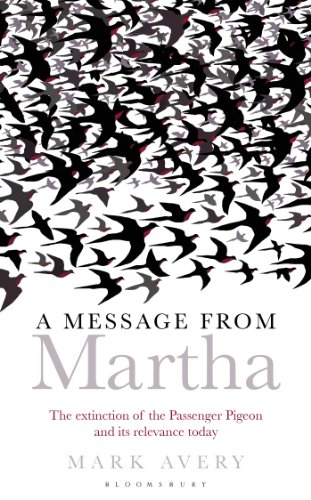 In his book, Hope is the Thing with Feathers, Chris Cokinos describes the death of what may have been the last wild Passenger Pigeon at the hands of the young Press Clay Southworth in rural Ohio. That was on 24 March 1900 – after that, the only Passenger Pigeons known to man (and woman) were captive ones which dwindled away to the last bird, Martha, who died in Cincinnati Zoo on 1 September 1914.
In his book, Hope is the Thing with Feathers, Chris Cokinos describes the death of what may have been the last wild Passenger Pigeon at the hands of the young Press Clay Southworth in rural Ohio. That was on 24 March 1900 – after that, the only Passenger Pigeons known to man (and woman) were captive ones which dwindled away to the last bird, Martha, who died in Cincinnati Zoo on 1 September 1914.
Chapter 4 of A Message from Martha contains accounts of my visits to a range of sites which were important in the story of the Passenger Pigeon’s demise. Although the Passenger Pigeon is long gone – Martha died on 1 September 1914 – the places are still there and I wanted to see what they are like now, and imagine what they would have been like a century or more ago.
The story of the shooting of the (perhaps) last wild Passenger Pigeon on a farm by a young boy is told well in Cokinos’s book and I wanted to see where this bird was killed. Rural Ohio isn’t that different in appearance from rural Northamptonshire so I felt quite at home on the sunny Sunday in May last year.
The Passenger Pigeon that Southworth shot was stuffed and can now be seen in a museum in Columbus, Ohio – I went there too.
Elsewhere in Chapter 4 I tell of the places where John James Audubon and Alexander Wilson saw flocks of billions of Passenger Pigeons, of the monument to the Passenger Pigeon in a beautiful spot overlooking the confluence of the Wisconsin and Mississippi rivers, of the largest Passenger Pigeon colony ever described and of the woods around Petoskey, Michigan where Passenger Pigeons were slaughtered in their millions and where a young Ernest Hemingway spent his vacations.
But that’s just a little bit of Chapter 4 of A Message from Martha which will be published in the UK on 10 July and in the USA in August. You can pre-order it from Amazon at £16.99 right now by clicking here.
[registration_form]